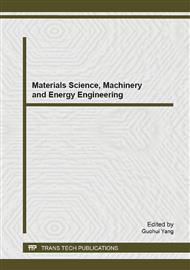[1]
L. Skuja, The nature of optically active oxygen-deficiency-related centers in amorphous silicon dioxide, J. Non-Cryst. Solids, 1998, 239: 16-48.
DOI: 10.1016/s0022-3093(98)00720-0
Google Scholar
[2]
K. Saito and A.J. Ikushima, Effects of fluorine on structure, structural relaxation, and absorption edge in silica glass, Journal of applied physics, 2002, 91(8): 4886-4890.
DOI: 10.1063/1.1459102
Google Scholar
[3]
P. Karlitschek, G. Hillrichs, K. -F. Klein, Photodegradation and nonlinear effects in optical fibres introduced by pulsed UV-laser radiation, Optics Communications, 1995, 116, p.219.
DOI: 10.1016/0030-4018(95)00057-f
Google Scholar
[4]
S. Agnello and L. Nuccio, Thermal stability of gamma irradiation induced oxygen deficient centers in silica, Physical review B, 2006, 73(11): 115203 (1-6).
DOI: 10.1103/physrevb.73.115203
Google Scholar
[5]
E. J. Friebele, D. L. Griscom and M. J. Marrone, The optical absorption and luminescence bands near 2 eV in irradiated and drawn synthetic silica, J. Non-cryst. Solids, 1985, 71, pp.133-144.
DOI: 10.1016/0022-3093(85)90282-0
Google Scholar
[6]
D.L. Griscom, in Defects in glasses, edited by F.L. Galeener, D.L. Griscom, and M.J. Weberf, materials research society, Pittsburgh, 1986, p.213.
Google Scholar
[7]
D.L. Griscom, Electron spin resonance investigations of defects and defect processes in amorphous silicon dioxide, Reviews of Solid State Science 4, 1990, pp.565-599.
Google Scholar
[8]
D.L. Griscom, J. Non-cryst. Solids, 1992, 149, p.137.
Google Scholar
[9]
P. Kaiser, Drawing-induced coloration in vitreous silica fibers, J. Opt. Soc. Amer., 1974, pp.475-481.
DOI: 10.1364/josa.64.000475
Google Scholar
[10]
E. J. Friebele, G. H. Sigel, Jr., and D. L. Griscom, Drawing-induced defect centers in a fused silica core fiber, Appl. Phys. Lett., 1976, 28, pp.515-518.
DOI: 10.1063/1.88839
Google Scholar
[11]
H. Hanafusa, Y. Hibino, and F. Yamamoto, Formation mechanism of drawing-induced centers in silica optical fibers, Journal of applied physics, 1985, 58, pp.1356-1361.
DOI: 10.1063/1.336107
Google Scholar
[12]
G. Origlio, M. Cannas, S. Girard, R. Boscaino, A. Boukeenter, and Y. Ouerdane, Influence of the drawing process on the defect generation in multistep-index germanium-doped optical fibers., Optics Letters, 2009, 34, pp.2282-2284.
DOI: 10.1364/ol.34.002282
Google Scholar
[13]
S. Girard, Y. Ouerdane, A. Boukeenter, and J. -P. Meunier, J. Appl. Phys., 2006, 99, p.023104.
Google Scholar
[14]
Y. Hibino, H. Hanafusa, and S. sakaguchi, Formation of drawing-induced centers in silica optical fibers, Japanese Journal of applied physics, 1985, 24, pp.1117-1121.
DOI: 10.1143/jjap.24.1117
Google Scholar
[15]
Tingyun Wang, Zhongyin Xiao, and Wenyun Luo, Influences of Thermal Annealing Temperatures on Irradiation Induced Centers in Silica Glass, IEEE Transactions on Nuclear Science, 2008, 55, pp.2685-2688.
DOI: 10.1109/tns.2008.2003439
Google Scholar


